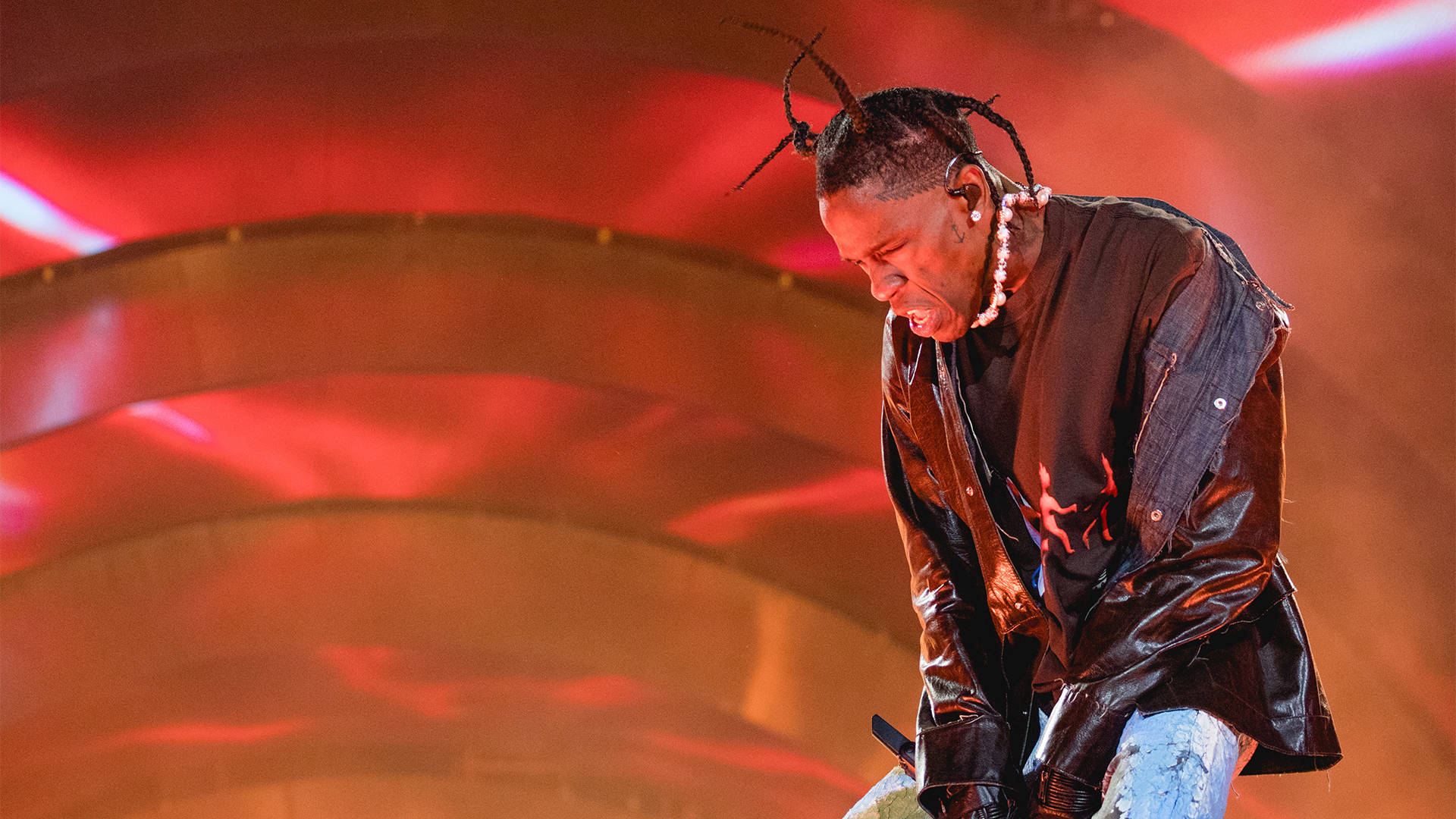The tragedy that became Astroworld has left 10 deaths, untold injuries and over 100 lawsuits in its wake just one week after the ill-fated Houston festival. The court of public opinion will hash out who they think should be held responsible long before these cases will be handled through the actual legal system. But there’s been a blind spot while considering Travis Scott’s branding and its relation to the chaos and subsequent backlash: Is Travis Scott what happens when a Black man cosplays white rage?
That Travis Scott, born Jacques Webster II, is considered a rapper is mainly a technicality. Though the Missouri City, Texas native indulges in stereotypical rap aesthetics bolstered by infectious trap beats that made him a highly sought after contributor, his position in hip hop hasn’t gone without controversy since his initial signing to kind-of-brother-in-law Kanye West’s GOOD Music label in 2013. Dogged by accusations of being a suburban poser with limited lyrical ability since his arrival on the scene, these claims of disingenuousness never stopped his rising star power. This is largely due in part to ingenious branding that didn’t rely on support from hip-hop or the culture. His money bag is, and has always been, reliant on his ability to tap into a subculture typically associated with white rock and punk acts: anarchy and rage.

Scott was never a “crossover artist.” He came into the game carefully manicured as Black masculinity accessible and commodified for (white) suburban angst and rebelliousness. In contrast, Scott initially denounced Black activism during his meteoric rise, lamenting on slain teenager Mike Brown’s “consequences” in 2014, as Blavity previously reported. Multi-million dollar deals with McDonald’s, Nike and Fortnight (with his own expansion pack prophetically titled RAGE) followed.
To be clear, rage doesn’t belong to one group of people, but the ability to express it is a privilege afforded to few. And historically, never to Black people. For those who aren't over policed, "raging" is considered a joyful outlet of expression, chaotic but generally harmless despite what damage caused. In contrast, Black rage has always been considered an ever present threat regardless of the validity behind the emotion, even if the emotion goes unexpressed. Since the beginning of the Black Lives Matter movement, there’s been an onslaught of examples in which peaceful protests led by, or in support of, the Black community have been met with violent aggression by the police state: at marches to voting polls, at violin vigils and even silent protests haven’t gone without derision both historically and in modern day.
Scott would eventually backtrack on his BLM stance, but his public persona chronically documented a Black man out of touch with the reality and stakes of the times. The devastating result of this year's Astroworld is the piece de resistance in a long line of calamity offered up by the performer and his promoters. In 2015, Scott pleaded guilty to reckless conduct stemming from his performance at Lollapalooza in Chicago, where he encouraged barricade jumping and disparaged security guards.
Two years later, Scott was arrested for inciting a riot after motivating fans to rush the stage at Walmart Arkansas Music Pavilion in 2017. “I just hate getting arrested man. S*** is wack,” he said of the incident as seen on his 2019 documentary, Travis Scott: Look Mom I Can Fly.
That said, Travis Scott is only one person. Questions on the efficiency of Astroworld’s safety plan and the Houston Police Department’s handling of the melee have been called into question. The festival's 56-page plan accounted for inclement weather but not “a range of key crowd issues, such as a crowd surge, moshing and crowd collapse,” as reported by Houston Public Media. All of which were known issues of Scott’s shows. The plan also stated that the only people able to stop the concert would be the executive and concert producer, a detail brought to the public’s attention by none other than former Baltimore mayor turned Scott spokesperson Stephanie Rawlings-Blake. In contrast, Houston Fire Chief Samuel Peña went on record to say it was Scott’s responsibility to end the festivities. Chief of Police Troy Finner joined in on the finger pointing but had conveniently forgotten his previous admission that the police were unwilling to stop the concert even after being alerted that things had gone astray.
In fact, footage from earlier in the day captured an aggressive stream of gatecrashers before things turned deadly, police doing little to quell the onslaught.
The surreal imagery brought to mind a time from earlier this year where authorities sat passive in the face of a mob and it begged the question: would primarily Black concert goers have been allowed to “rage” with minimal oversight or care from authorities?

Though a detailed history of chaos has followed the business mogul, promoters and brands never hesitated to be affiliated with the star, until now. Scott’s upcoming release with Nike has been delayed indefinitely while Fortnite has pulled his popular character from the game.
The aftermath of this devastating event will likely change how concerts are planned and executed from here on out. And there will be several takeaways, one of those being how white rage packaged in Black art will only be bankable until white institutions are looking for culpability.
